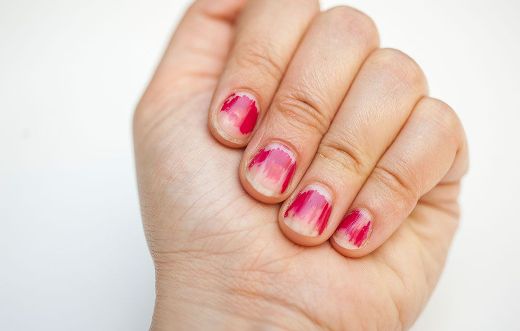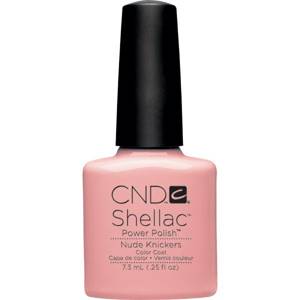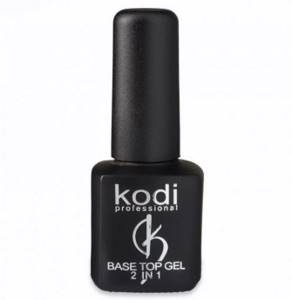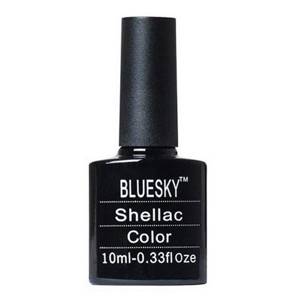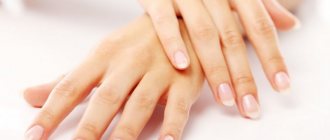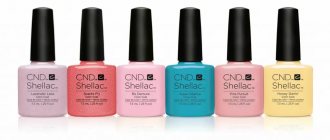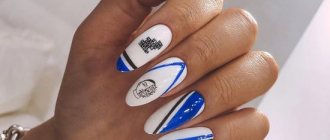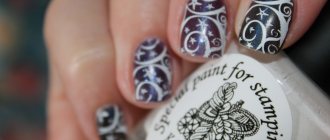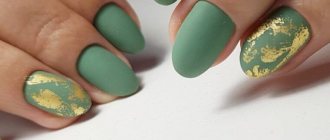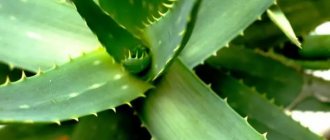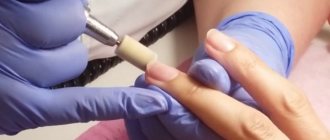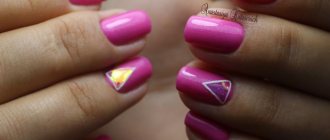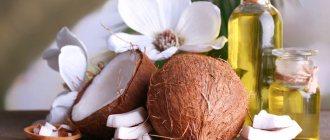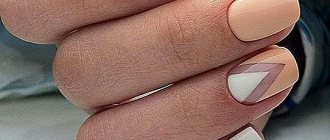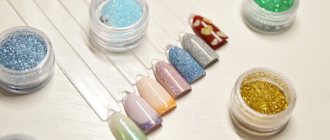Gel polish and shellac are the names of the same manicure procedures, but they differ in many characteristics: the cost of the procedure, the composition of materials, the duration of wearing the decorative coating, a variety of color shades, and the algorithm for applying the material.
It is important that gel polish and shellac are worn for an average of 2-3 weeks, thin the nail plate, and require careful care after application. The composition of gel polish is more harmful because it contains toxic components.
What is the difference between gel polish and shellac, are they the same thing or not?
Gel polish and shellac are not the same thing, although these materials have many of the same characteristics. To understand the essence of each material, it is enough to know the following nuances:
- For the first time, durable varnishes were created by CND. They received the common name Shellac.
- Other manufacturers created varnishes with similar effects that were resistant to abrasion/washing out for up to 14 days. They began to be called gel polishes.
- These two materials cannot be called similar, because they have significant differences.
| Gel polish | Shellac |
| Before application, you need to do a manicure and remove the top layer of the nail, apply a primer (base), colored varnish to the plate, and use a fixative (top). | The nail is not filed (this preserves the integrity of the plate), a primer for the decorative coating is not required, the fixative is applied as desired. |
| The color palette of gel polishes is very large (up to 90 shades for some manufacturers), you can use various effects such as “cat’s eye”, glitter, mother-of-pearl. | The choice of colors is limited to 30-50 shades; many decorative techniques for decorating nails are not available. |
Shellac can cause significant damage to the nail plate - in most cases, the nail becomes too dry and thin, and becomes more brittle. But this can be avoided if you contact specialists to apply the material and strictly follow their recommendations for the care and wearing of decorative coating.
By the way, in different sources there are different spellings of the name of the material for sustainable manicure - shilak, shellac, sherlac, schelak. But it is actually correct to write strictly according to the transcription of the original word - shellac.
How to use it correctly
Another important difference between gel polish and regular polish is the complexity of its application. For a self-manicure, you will need to purchase, in addition to several shades, other products. This is nail oil, base coat, fixative, and a special lamp. You need to study well how to use gel polish correctly. Not everyone knows how its application differs from a simple manicure.
First you need to treat your nails, remove all the irregularities on them. Then apply the base coat. Dry it. Only after this is the gel polish applied. It hardens only under the influence of ultraviolet rays, so you need to dry your nails under a special lamp. On top you need to cover your nails with a fixative, which also needs to be dried.
Some women, trying to save money, make mistakes that ruin their manicure and make it less durable. Most often, instead of a layer of expensive coating, they apply regular varnish. This causes it to become weak and crack within a few days. Acrylic paints cannot be used for these purposes either. You need to remember that nails coated with gel polish need to be looked after daily. It is recommended to lubricate the cuticle with special oil.
Gel polish and shellac - what's the difference?
The difference between gel polish and shellac is their composition and cost.
| Characteristic | Gel polish | Shellac |
| Base material | gel | varnish |
| Harmful substances in the composition | formaldehyde, toluene | completely absent |
| Choice of colors | the range includes about 30 shades, some manufacturers have increased this number to 90 | 60 shades |
| Acetone included | must be present | not contained |
| The need to use a primer | definitely needed | not used |
| Removing the coating | performed only by a master | can be done independently at home |
| Time of “hardening”, polymerization of the material | 2-3 minutes in UV light, 30-60 seconds in LED equipment | much faster than gel polish |
| Probability of correction | can be done at any time | coating restoration is not provided |
By composition
If we consider the composition of materials for manicure, then gel polish contains highly toxic substances such as formaldehyde, dibutyl phthalate - they inevitably cause allergic reactions, the body will be constantly poisoned by toxins. Shellac also contains not the most beneficial components (methacrylates, titanium dioxide), but they do not have a pronounced detrimental effect on the functioning of organs and systems.
By polymerization
The polymerization process also differs for the materials in question - for example, to harden shellac, only UV lamps are needed; other light rays simply will not act as they should on the decorative coating.
But gel polish polymerizes perfectly under LED devices, and from a practical point of view, this is much more convenient for both the artist and the client.
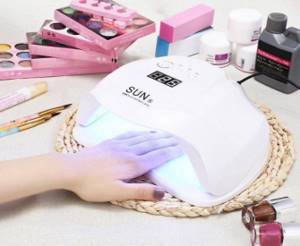
Gel polish is considered a more durable coating, especially if it is applied in 2-3 thin layers and each is dried separately in a special lamp - the beauty lasts for at least 15 days, sometimes up to 20-30 days. Shellac, on the other hand, allows hands to remain attractive for a maximum of 15 days, although such a coating can peel off before the specified period if the rules for caring for it are not followed.
Differences in coating removal
Removing the coating from the nail plate for both gel polish and shellac should only be done by a specialist, because peeling off on your own leads to damage to the plate and long-term recovery. This process is quite labor-intensive, which can be carried out at home, but only with mandatory adherence to the manipulation algorithm:
- Using a nail file or a ceramic corn cutter, cut off as much of the decorative coating as possible.
- Soak cotton pads in regular nail polish remover. Wrap your nails with them and put foil on top in the form of caps. Such a “compress” will eliminate the possibility of the nail polish remover evaporating before it dissolves the decorative coating.
- Wait at least 15 minutes, it is better to increase this period to 30 minutes.
- Remove the cotton pads with foil.
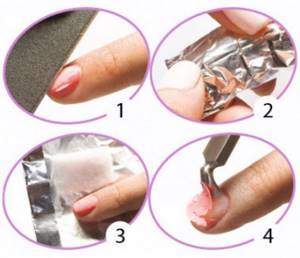
The same algorithm should be followed when removing shellac, but with one difference - you do not need to file it before using nail polish remover. But you need to take into account that in this case, after removing the cotton pads, there may be remnants of the coloring pigment on the nail plate. They are removed with an orange stick from a standard manicure set.
But if professional means are used to remove the coating, and the manipulation is carried out by a master, then undesirable consequences can be avoided.
How is gel polish different from regular polish?
Gel polish differs from regular polish in that:
- The latter is a decorative coating that gives the nails a certain color and sometimes texture, shine or matte.
- Conventional varnish is not durable, low cost and easy to use.
- Sometimes varnish can have healing properties - strengthen nails, prevent them from peeling, saturate the plate with vitamins, and so on.
- Gel polish lasts for at least 14 days and is much more difficult to remove compared to regular material.
- Modern material is distinguished by a more meager palette of color shades and a higher price.
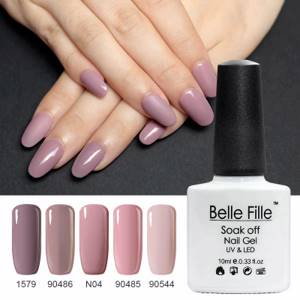
Actually, gel polish is an “average” material between a regular coating and a composition for plate extension. A special advantage of modern coating is the absence of a “nuclear” odor, which can be irritating to others during manipulation.
What is the difference between a manicure and gel polish?
The main difference between a manicure and gel polish is the principle of the procedure: in the first case, the master or the woman herself trims the length of the nail plate, gives it the desired shape, removes the cuticle and files the edge of the nail. Next, you can apply decorative (ordinary varnish) to its surface in several layers.
But to use gel polish, you will definitely need to first remove the top layer of the nail plate, which will ensure a strong fixation of the material.
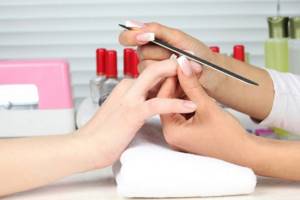
In addition, during the manicure the master does not use an ultraviolet or LED lamp, and correction will have to be carried out at least once every 5 days.
What is the difference between shellac and nail extensions?
Shellac differs from nail extensions in the essence of the procedure:
- extension is an increase in the length of nails using a special gel or acrylic;
- shellac is a coating of a natural plate with a gel composition, after which it becomes stronger.
The second version of the manicure procedure does not imply lengthening the nail, but makes it more beautiful, well-groomed and neat. Correction is required only after the plate itself has grown to such a size that the color coating looks untidy.
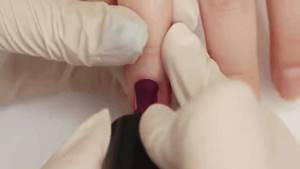
Features of nail extension:
- carried out using tips (paper, liquid, plastic);
- the tips are first glued to the client’s own nail, then filed to the required length, and given the desired shape;
- the tips remain until the acrylic/gel has completely polymerized and only then are removed;
- extension materials can cause a strong allergic reaction;
- Damage to the nail plate and even its complete separation are possible.
Nail extensions are not performed during pregnancy and during hormone therapy - the natural nail may reject the gel material or acrylic.
Watch the video about the technique of gel nail extensions:
Features of shellac:
- the length and structure of the nail plate do not change;
- the surface of the nail is pre-polished;
- Each stage of manipulation ends with drying in an ultraviolet lamp.
This coating lasts for 3 weeks, after which it is necessary to carry out correction. Perhaps it will be needed earlier - such a coating can break off, crack if the master did his work in bad faith or a woman came for manipulation during menstruation, with progressive thyroid disease.
The best gels for nail extensions, prices
High-quality gels for nail extensions can provide good durability of manicure, but at the same time they have a high price. Cheap products not only wear poorly, but can also damage the structure of the nail.
When choosing a gel for extensions, you should consider the following parameters:
- consistency (the gel should not be too thick or too liquid in order for the application of the coating to be as comfortable as possible);
- odor (a pungent odor indicates the presence of harmful compounds in the material);
- compound;
- polymerization time (gels with rapid polymerization can cause discomfort, and those that take longer to dry in the lamp increase the coating time);
- The base and top coat must be used from the same company as the building gel.
Single-phase gels are the most popular due to the time savings during application. The best gels for nail extensions and their comparative characteristics are shown in Table 2.
Table 2. Gels for extensions
| Gel | Peculiarities | Price |
| JessNail 3 in 1 | easy to apply, but after a week it is fraught with the formation of detachments | from 250 rub. 15 ml |
| Global | one of the best gels for beginners due to its excellent consistency | from 300 rub. for 15 ml |
| Irisk Professional | does not turn yellow, is easy to apply, but deteriorates upon contact with acetone-containing substances | from 300 rub. for 15 ml |
| NSI Balance basic clear gel | base gel, used to strengthen the nail plate, available in pink and also transparent | from 500 rub. for 14 ml |
| CNI | professional gel, hypoallergenic, easy to apply | from 800 rub. for 8 ml |
Gel polish or shellac - which is better, which lasts longer, how often should it be adjusted?
It is impossible to say for sure which is better – gel polish or shellac, because you need to evaluate their advantages/disadvantages, which are presented in the table for clarity.
| Benefits of gel polish | Disadvantages of gel polish |
| Manicure is done quickly - maximum 3 hours | Before application, the nail plate is seriously damaged due to its polishing |
| Thin nail plates are reliably protected from the harmful effects of external factors | It is difficult to perform the procedure at home; you will need a lot of equipment |
| Color shades are presented in a large assortment | The composition often causes an allergic reaction |
| Drying of the coating is fast and carried out in a special lamp | During the application of gel polish, an unpleasant odor of the coating is clearly felt |
| Relatively low cost of manipulation | You cannot constantly wear a manicure with gel polish, the plate will be hopelessly damaged |
| Correction can be carried out without removing the coating | It is impossible to remove the coating with ordinary means. |
| Bottles of material are sold in large volumes | The safety of using ultraviolet radiation during coating drying is questionable |
| Benefits of shellac | Disadvantages of shellac |
| Applies easily and evenly due to its homogeneous structure | High cost of material and procedure |
| The integrity of the surface of the nail plate is not compromised | It is possible for the nail to dry out if the manipulation is performed frequently. |
| The composition of the coating is hypoallergenic | Beauty preservation period – less than 2 weeks |
| The material has no odor | The coating often cracks and becomes cloudy |
| The choice of colors is quite wide | Correction cannot be performed; you will need to completely remove the old layer and apply a new one |
| Does not require the use of primer or topcoat | Vials of material are sold in minimum quantities |
| Shellac is easily removed with a special tool | Very often there are counterfeits of shellac on sale. |
Experts recommend that a woman independently decide on the choice of coating, because both materials have disadvantages and advantages.
What is better to choose
Everyone decides for themselves what kind of manicure to do. If you consider how gel polish differs from regular polish, you can understand that each product has both advantages and disadvantages. You need to consider how much money and time a woman is willing to spend on a manicure. For ladies for whom it is important to constantly have well-groomed hands, it is better to choose gel polish. You can apply it once every 2-3 weeks and no longer worry about your hands. For those who have a lot of time, but do not have the money for a good manicure, regular polish is preferable. It is also chosen by women who like to change their look frequently, which is difficult to do with gel polish.
A more durable coating is necessary for those ladies who do not have the opportunity to fix their manicure every day. Gel polish is also chosen by those who find it difficult to grow their nails. But the durability and quality of the innovative coating depend on its manufacturer. Some companies produce such low quality products. The best are Shellac from CND, Gelish, and Luxio gel polish. We described above how these products differ from regular varnish.
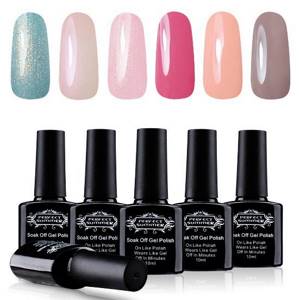
What is more harmful - gel or shellac?
Experts are still arguing which is more harmful - gel or shellac, and based on reviews from women and doctors, we can conclude that gel polish has the most negative effect on the nail plate. And this happens because of the composition of the coating, because it contains toxic compounds - toxins automatically enter the body, accumulate and disrupt the functioning of organs and systems.
In addition, shellac is applied in a thinner layer, wears less time and makes the plate heavier, which eliminates its thinning and increased fragility.
Name of shellacs
If you use shellacs for decorative coating, then you need to know the names of the most famous, popular and safest materials:
| Name | Description | Photo |
| Shellac CND | Ideal consistency, comfortable brush, manicure will be characterized by maximum stability. Studies have been conducted that have confirmed the safety of the coating for the health of the nail plates. Shellac from this manufacturer has a very dense structure and is easily removed from nails. Ideal coverage is obtained after applying only 2 layers. |
|
| Kodi | A hard brush, a short “wearing” period of the decorative coating, an assortment of almost 400 color shades, there is even a “cat’s eye”. The texture of shellac is not dense, but it does not flow when applied to the plate. Some colors, even with numerous layers, do not cover the nail - for example, yellow and orange. |
|
| Bluesky | Inexpensive material, it features a high-quality, fluffy brush, which simplifies the process of applying shellac to the nail. The consistency of the material is liquid, but its pigment sometimes penetrates the nail and colors it. The shelf life of the manicure coating does not exceed 10 days, but the color palette includes about 600 shades. |
|
If a woman has a choice, then preference should be given to more expensive brands of shellac, because only this will ensure safety for health and a longer period of wearing the decorative coating.
How to extend the wearing period
To extend the wearing of shellac or gel polish, you should follow the following recommendations from the experts:
- do not allow aggressive substances to get on your nails;
- prevent exposure of plates with decorative coating to high temperatures;
- do not wash dishes or clean without gloves;
- do not scratch the coating;
- Do not try to remove it with nail scissors, knives, or flat screwdrivers.
Watch the video on how to extend the wearing time of gel polish:
Risks of wearing
Despite the beauty of gel polish and shellac coating, you need to remember the possible risks of wearing:
- stripes, tubercles, and roughness form on the surface of the nails;
- the color of the plate may acquire a yellowish or gray tint;
- nails (your own) completely lose their shine;
- delaminations appear on the protruding section of the plate;
- the cuticle and periungual area of the skin become covered with hangnails and roughness.
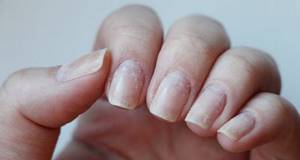
Nails after removing gel polish
At what age can you
The optimal age at which you can start applying durable decorative coatings is 16 years.
No matter how good gel polish and shellac are, no matter how expensive and high quality they are, they can have a detrimental effect on an unformed nail plate. Medicine officially states that up to the age of 14, nails still remain soft and are at the stage of formation/growth/strengthening. Gel polishes and shellac not only damage the nail, but also directly affect the functioning of the hormonal system.
We recommend reading the article about what you need to know when choosing a lamp for gel polish. From it you will learn why you need a lamp for gel polish, how it works, and how to choose a lamp for drying gel polish. And here is more information about how to remove shellac at home.
Gel polish and shellac are considered an excellent choice for long-term wearing of manicure and preserving the decorative coating of nails. When choosing a specific material, it is worth taking into account their quality characteristics, composition and impact on a woman’s health. In any case, it is worth contacting specialists and this should be done no earlier than 16 years of age.
Characteristics of varnish
This is the most common nail coating for many. Women have been using it for decades. The polish helps change the color and texture of your nails. It can be glossy or matte, with sparkles or glitter. It is with the help of varnish that most women do their manicures.
Its advantage is its low price, wide range of colors and the ability to apply it yourself at home. In this case, no additional devices are required. In addition, with the help of varnish, you can create various designs and change the look every day, since this coating is easy to apply to the nails and removed using affordable and cheap means.
The disadvantage of varnish is its fragility. It stays on the nails for 3 to 7 days and then begins to chip. The varnish on long nails cracks especially quickly. When doing homework, this can happen within a day. The downside is that it takes a long time to dry. If you accidentally touch the nail at this moment, a mark will remain on it that cannot be removed. After getting a manicure in the evening, women often notice stripes and scratches on their nails in the morning.
